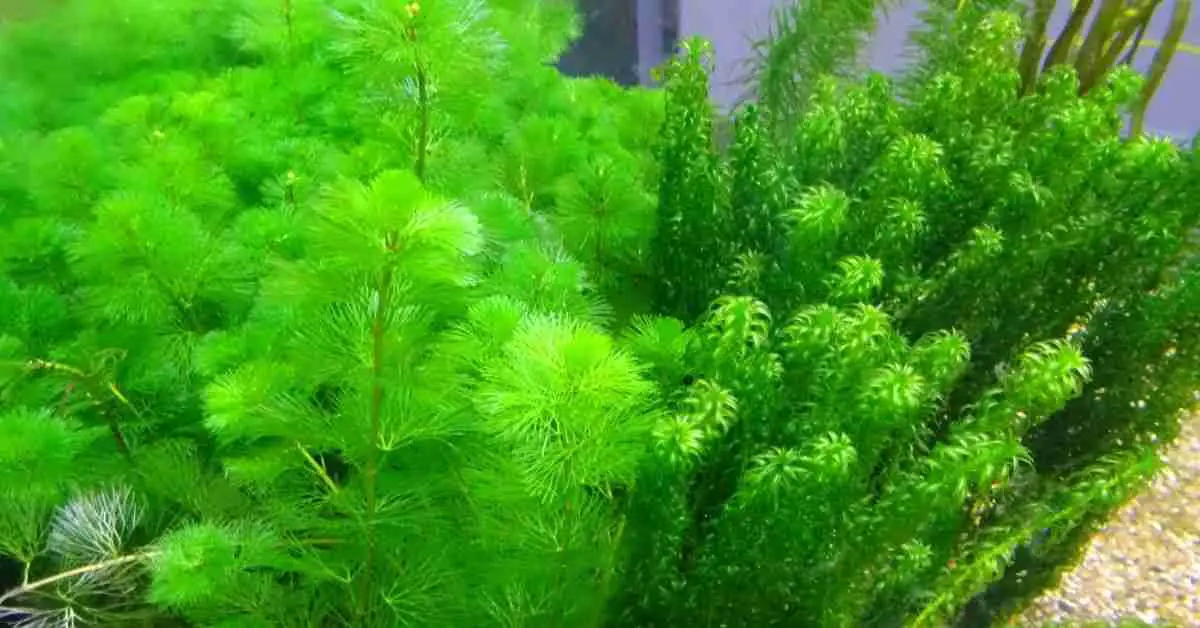Among us, many people use Chaeto to absorb excess nitrates and phosphates. However, some of us do like to have Chaeto as ornaments.
So, when your Chaeto turns white, it’s something to be bothered about.
What are the reasons behind your Chaeto turning white?
One of the most prominent reasons Chaeto turns white is the lack of sufficient lights. Starvation from lack of nitrates and phosphates can also play an important role here.
Another note you should remember is that Chaeto absorbs nutrients very slowly. Therefore, having other organisms that depend on the same nutrients can hurt Chaeto.
Now, this is only a portion of the whole discussion. That’s why we’ve explained it in more detail down below.
4 Things To Do If Your Chaeto Isn’t Turning White
There are only a few reasons why your Chaeto is turning white. However, they are easy to fix so you have nothing to worry about.
With that said, let us begin!
Not Providing a Good Light Can Kill Your Chaeto
Among all other algae, Chaetomorpha is one of those algae that needs a lot of light to grow. One common mistake is that they don’t provide good light for algae.
Install a Good Light Source
Most of us know that trees and other plants use photosynthesis to make food. That’s why the absence of a good light source can potentially kill your Chaeto.
Also, this will help your algae absorb more nitrates and phosphates. So, the better light you provide, the cleaner your water will be.
Also, Chaetomorpha grows the most under red and blue lights. The required percentage and wavelengths are given below –
| Lights | Percentage | Wavelength |
| Red | 50% or more | 630 nm – 700 nm |
| Blue | 10% – 15% | 415 nm – 435 nm |
Maintaining this spectrum will help your coral grow more rapidly.
Also, please remember that your algae shouldn’t be under light all the time. They need a moderate amount of darkness as well.
Ensure your Chaeto is under darkness for at least 8 hours a day. This will help your algae equalize the pH amount of the water.
Are You Checking Nitrates and Phosphates Levels?
Most of us use algae to reduce toxic elements like nitrates and phosphates. They are very harmful to fish and corals.
That’s why to keep them at a low level; an alga sometimes becomes too handy.
However, if you’re using them to decorate your aquarium, they will need supplies. Because eventually, nitrates and phosphates will get reduced to zero.
When this happens, your algae will start to starve. As a result, they will gradually become white.
Also, if you can’t manage colorful lights, you can always get a good bulb for your tank.
White has all the spectrums of the red, blue, and yellow colors, so it’s a great cheaper option.
Speaking of lights, here are some lights that we recommend –
| Product 1 | |
| Product 2 |
Now, you can easily grab one that you like and get started!
Check Your Nitrate and Phosphate Levels
One of the most helpful tips is to check your nitrates level more often. Nitrates are essential for algae growth.
Unfortunately, most of us often forget to maintain a proper level of nitrates. This happens because algae are often not given enough importance, like corals.
The proper amount of nitrates if you keep algae is 3-5 ppm. If your nitrate levels fall under 3ppm, your algae will start starving.
This can easily be avoided if you’re aware enough. You can check your water very easily with a quality nitrate test kit.
Like nitrates, algae also feeds on phosphates. In general, phosphates are super toxic to fishes and corals.
Excessive amounts of phosphates can easily kill your sea organisms. This can get tricky if you keep fish and corals in the same tank.
So, you must be careful not to overdose on phosphates while supplying them. The minimum amount of phosphates that should be maintained is 0.02ppm.
If the level falls below this range, your algae will start to perish. On the contrary, the recommended level of phosphates for your system is 0.07ppm.
That’s why to be sure to check on phosphates level frequently. This can easily be done with a good phosphate test kit.
So, always try to avoid an excessive amount of phosphates in your aquarium.
Too Much Magnesium Can Halt Algae Growth
Unlike nitrates and phosphates, magnesium works the other way. It only becomes a part of the equation if you keep fish and corals.
Keep Your Magnesium Level in Check
Excessive phosphates, which are necessary, can hurt your overall alkalinity. If your system doesn’t have enough magnesium, this will cause an imbalance.
As a result, fish and corals will have a high chance of dying. Always be sure to test the phosphate level before dosing.
If the level is under 0.03 ppm, overdosing will harm your corals.
That’s where magnesium comes into play. The minimum amount which won’t hurt the algae is 1500ppm.
If you’re keeping only algae, you don’t have to worry about it. Just keeping it under 1500ppm will do the trick.
However, the math is slightly different if you keep fish and corals. Also, remember that you also need to maintain this amount not to hurt the alkalinity.
Simply put, a lack of magnesium will hurt calcium and alkalinity. On the contrary, excessive magnesium will hurt algae severely.
However, you can also lower your magnesium level whenever you want to.
Lack of Proper Water Flow Can Hurt Your Algae
Lack of water movement can stall your algae growth. Since Chaeto doesn’t have roots, they need water flow for movements.
Increase Water Flow Around Chaeto
It is advised to move Chaeto at least once a week if your tank has no water flow.
However, your refugium should have a strong pump for sufficient water flow. If you have a 5-gallon refugium, the adequate water flow should be 5 gallons per hour.
Also, the algae depend on the chaotic flow created by specialized water pumps. Putting your water pump in the middle of the tank can help the flow reach everywhere.
Simply put, the water flow for Chaeto is more important than you think.
FAQs
Question: How many hours of light do you need for Chaeto?
Answer: Chaetomorpha requires around 8 hours of darkness. So, ensure it gets proper lights for at least 16 hours. You can keep the pH stable by managing a reverse daylight system.
Question: Does Chaeto die without lights?
Answer: Yes. Without light, it can’t engage in photosynthesis. As a result, the algae starves to death.
Question: Does Chaeto grow in white light?
Answer: Yes. White has all the spectrums of red, yellow, and blue. Therefore, you can just run a good LED light and be fine.
Conclusion
That’s all we could gather and explain on Chaeto turning white. We do hope you’ve found the information that you were looking for.
So, were you able to turn your Chaeto to green? Share your experience with us through the comment section below.

